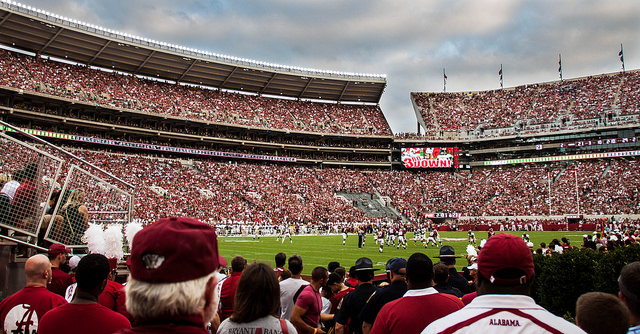I had the privilege this week to speak with the Kathleen Dunn Show on Wisconsin Public Radio about athletics spending and the future of higher education. Our discussion covered a wide range of issues related to intercollegiate athletics as well as higher education more generally. The callers added great perspective and I enjoyed the opportunity. If you’re interested in these issues, I recommend you listen to the show or download the podcast version. In today’s post, I want to mention a couple of points that were raised in our discussion that are worthy of highlighting. Athletics presents a challenge to institutional leaders and all of those worried about the future of higher education.

1. Most athletics departments lose money. With the exception of the handful of large and successful athletics programs, the vast majority of athletics departments lose money. Millions and millions of dollars. Yes, there are large revenue streams from television, ticket sales, and fundraising. However, the expenses are even greater from facilities to coaches salaries. It doesn’t matter if you make $1 million in revenue if you spend $2 million in expenses.
2. Higher education institutions maximize prestige— not profits. Most businesses seek to maximize their bottom line. This makes sound economic sense. However, colleges and universities, as Howard Bowen once noted, focus on building their prestige. This is true for athletics as well as academics. As a result, many of the decisions that higher education institutions make aren’t rational when thinking about their financial implication.
3. College athletics serve as the front porch of the university. If you’re trying to sell your home, you want strong curb appeal. This is how many presidents and trustees view athletics. As Doug Toma argues convincingly, athletics provide a vehicle to connect with stakeholders more effectively than any other aspect of higher education. From average citizens to state legislators, athletics provide a connection to people who may have no involvement with the academic side of the institution.
4. The concern is over spectator sports. Even at large Power 5 conference schools, many sports are still about providing participation opportunities such as golf, volleyball, or tennis. The challenge is with spectator sports that are more about commercialization. This includes primarily football and men’s basketball. In some cases, also men’s hockey and women’s basketball.
5. The problems with athletics are not new. As I have argued in the past, the structure and motivation of athletics as been pretty consistent for a century. Problems with the influence of sports media, conflicts with the academic mission, cheating, and other improprieties have been there since the beginning. When we consider reform efforts, we have to remember that these are long term problems that are not going to be easily or quickly solved.
One last point that bears repeating, athletics bring enormous benefits to campuses. From marketing and exposure, recruiting students, connecting with stakeholders, fundraising, and broader economic benefits, intercollegiate athletics bring many positive elements to campuses.
Yet, we should rightly be concerned about the expenses of athletics programs. Athletics presents a classic prisoner’s dilemma. Each institution does what is in their own self-interest in the pursuit of athletics success, yet the collective action brings everyone down. Ultimately, universities aren’t above sacrificing their academic values in the pursuit of victories and revenue.
The forces of commercialization aren’t going away. If anything, the temptation to take financial advantage of the popularity of college sports is getting worse.
Both fans and those concerned more broadly about the future of higher education need to take notice.

